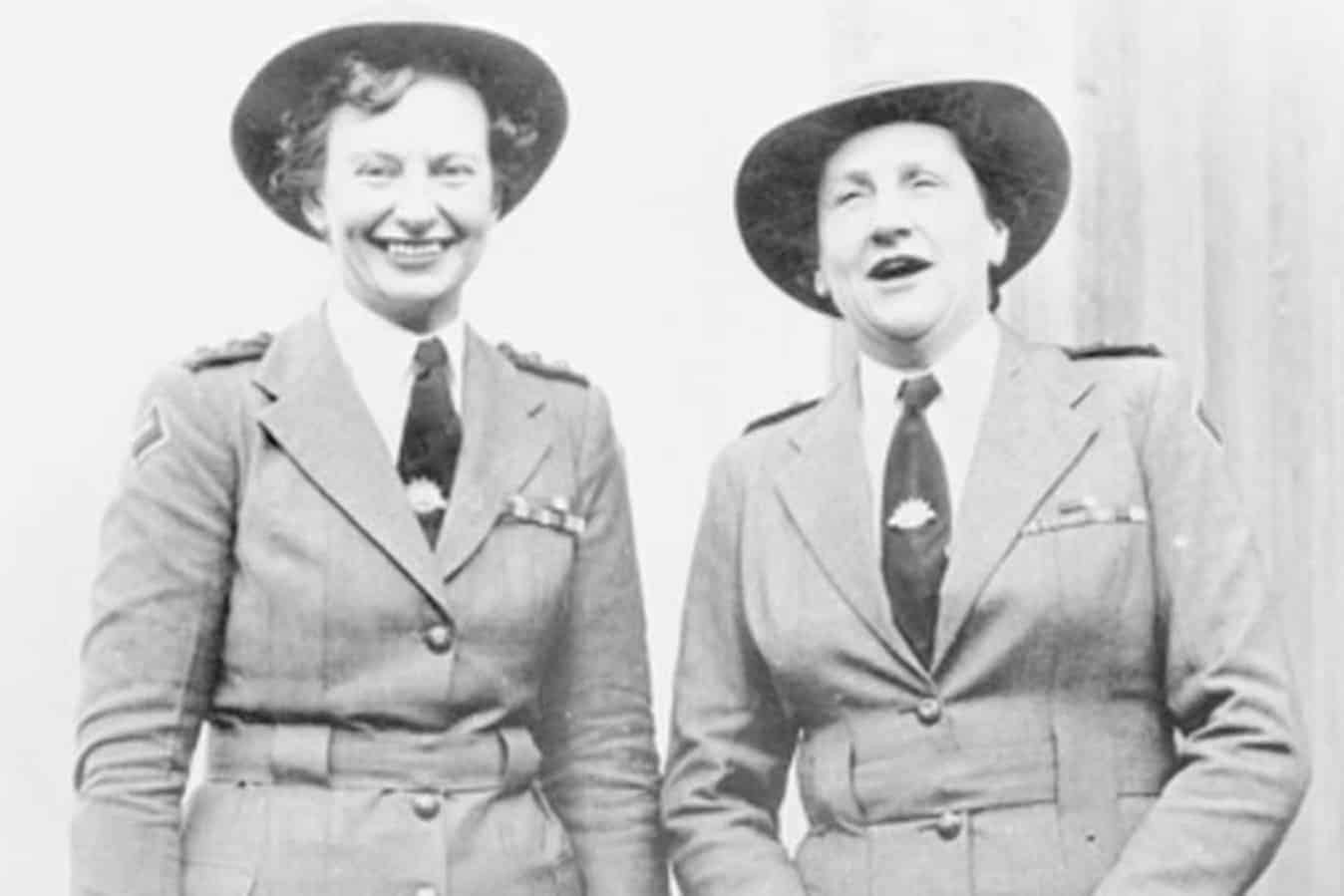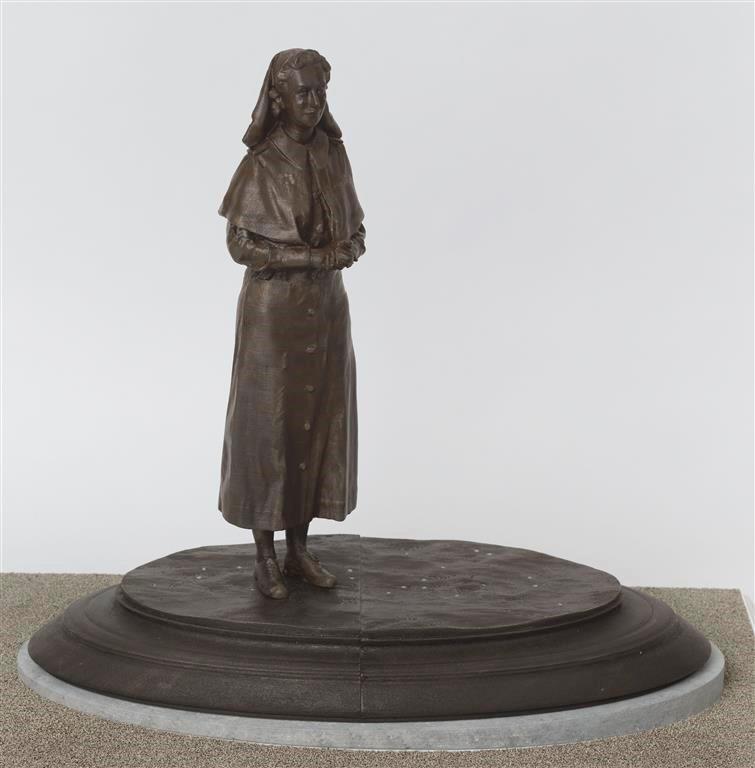While Nurse Vivian Bullwinkel is remembered for her heroic actions during WWII, it was her ongoing leadership and service to others including preserving the memory of fallen nurses that is now her legacy.
In February 1942, Vivian was amongst 65 Australian Army Nurses, wounded servicemen and civilians on the Australian navy ship SS Vyner following a Japanese onslaught in Singapore. Despite their escape the ship was bombed by Japanese aircraft and was sunk. Some survivors of the sinking ship managed to reach Bangka Island, east of Sumatra, in the Dutch East Indies, including 22 of the nurses.
However, Japanese forces also occupied Bangka Island and captured those who made it to shore. Held on the beach, the Japanese soldiers gathered the surviving servicemen and brutally executed most of them. Any survivors were placed in prisoner-of-war camps on the island.
The Japanese soldiers then proceeded to march the 22 nurses into the water at Banka beach. Knowing the soldiers’ intentions, Matron Irene Drummond shouted to her sisters, “Chin up girls! I’m proud of you all, and I love you!”
The women were ‘thigh deep’ in the water when massacred. All of the nurses perished, bar Vivian who survived after being shot in the hip and feigning her death. After spending 12 days hiding, she surrendered and was imprisoned in a Japanese camp. Under barbaric conditions she spent the next three years in captivity and was liberated at the end of WWII, where she returned to Australia in 1945.
Vivian bravely testified before the Tokyo War Crimes Tribunal in 1947, describing the horrors she witnessed. She likened the day to a scene from a movie, stating, “When we were thigh deep in the surf, they opened up a murderous fire, mowing us down like a scene I saw in a film as a child. The women around me shrieked, stiffened, and sank. I was hit here, in the left side, under the ribs, falling unconscious in the water.”
Back in Australia, Vivian and fellow veteran nurse Betty Jeffrey were inspired to open a centre where veteran nurses could congregate and, most importantly, preserve the memory of fallen Australian Veteran nurses.

With the support of their colleagues, Vivian and Betty visited every hospital in Victoria to explain their vision of their ‘living memorial’.
The nurses fundraised to achieve their goal, and in March 1949, the Australian Nurses Memorial Centre (ANMC) was opened.
ANMC Historian and Past President Arlene Bennett said the centre’s current goals are two-pronged.
“One is that we remember what happened to the nurses, and we commemorate that at our ANZAC day service,” she said. “The other prong is the scholarships which is a very important part of keeping the story alive.”
On top of being a living memorial, ANMC awards scholarships to nurses and hosts lectures to continue the professional development of nurses through education. The ANMC is one of the largest nursing scholarship contributors in Australia.
After successfully setting up ANMC, Vivian returned to nursing. In 1959 she became the Director of Nursing at Fairfield Infectious Diseases Hospital in Victoria.
During this time, Vivian was involved in many nursing-related ventures that included the positions of President of the College of Nursing Australia and member of Council for the Australian War Memorial.
During her tenure at the Fairfield Infectious Diseases Hospital, Vivian was known for her “… compassion and the deep concern she had for everyone,” as described by Dr Olga Kanitsaki AM, who was a colleague at the Fairfield Infectious Diseases Hospital.
“She kept an eye on you … she wanted the staff to be healthy,” she said.
Vivian was also known for treating her staff with the utmost respect, which was rare amongst most hospital matrons at the time.
Dr Kanitsaki reiterated, “She was an extraordinary woman, really.”
After the withdrawal of forces signalling the end of the Vietnamese war in 1975, Vivian volunteered to join a mission to move orphaned children out of Saigon to Melbourne. Out of the many nurses that applied, Vivian was chosen for her tenure and experience with infectious diseases and medivac nursing. Vivian, who was instrumental in the mission, was fondly nicknamed ‘Operation Babylift’.
In September 1977, Vivian married Colonel Francis (Frank) Statham and moved to Perth. Post-war, Vivian continued to be a consistent and powerful voice within the veteran community, including attending ANZAC Day parades. Vivian was awarded an Order of Australia Decoration, the Florence Nightingale Medal, the Royal Red Cross Medal, and a Member of the British Empire for her bravery in the war and her post-war services to Australia.
In 1993, Vivian bravely and triumphantly returned to Bangka Island to erect a memorial for her fallen sisters and those prisoners of war in Bangka Island camps.
In 2000, Vivian passed away peacefully from natural causes.
Vivian’s memory is commemorated in the Australian War Memorial with a portrait of her with her Florence Nightingale Medal displayed proudly.

Since her passing, Vivian has been remembered with many memorials. The Australian War Memorial in Canberra recently announced the erection of a statue in her memory.
“Sister Bullwinkel’s harrowing story of dedication, compassion, survival, and bravery will be commemorated in bronze at the Australian War Memorial … Vivian Bullwinkel should be a household name,” War Memorial Director Matt Anderson declared.
“The Memorial will commemorate this inspirational Australian and her legacy as a proud nurse and a brave leader.”
The bronze statue will feature a life-sized portrait of Vivian in a standing pose in her summer uniform with her hands gently clasped. The sculpture will also include a series of discs representing the women killed in the Banka Island massacre.
The discs will be arranged at the base of the sculpture as a reflection of the stars that would have been visible in the night sky on 16 February 1942.
Vivian Bullwinkel’s legacy shines brightly upon the landscape of nursing in Australia. She will never be forgotten.
Memberships at ANMC provide funding to update the centre and its facilities while furthering the education of nurses. For more information, go to: australiannursesmemorialcentre.org.au








